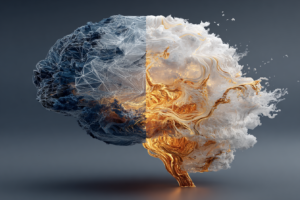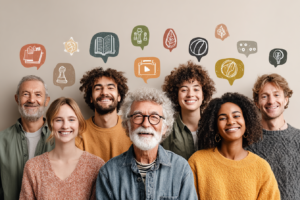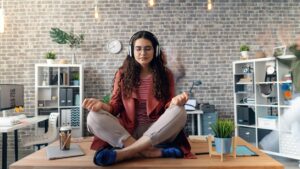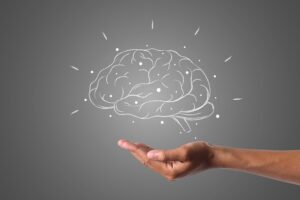
Learning Styles: What are They, Models and Discussion
Learning Styles. Learning is a massive part of everyone’s life. From childhood to adolescence, we go to school for hours daily to learn about various subjects. Outside of schooling, we continue to learn in everyday life — including how to perform better in the workplace, how to work through interpersonal issues, or how to fix practical household dilemmas. But does everyone learn in the same way? That doesn’t seem to be the case. There is no one-size-fits-all method of learning. To learn and teach most effectively, we must know an individual’s preferred learning styles.

Different Learning Styles?
It is often recognized that there are differences in the ways individuals learn. Even at a very young age, a child will prefer certain subjects and teachers over others. They may be excited at their performance on a math assignment, but spend their time in history class doodling. Alternatively, a child may be an enthusiastic art student under the guidance of one teacher, and then lose interest when that teacher is replaced. These are the consequences of a child’s unique learning style.
In the classroom, teachers will notice that students vary remarkably in the pace and manner by which they pick up new ideas and information. This same concept carries into the workplace, where employers notice that employees learn and perform better under different conditions. Conversely, each teacher has their own preferred method of teaching. Each teacher has their particular style and then so does each learner. Problems can occur when teachers and learners don’t match.
Models of Learning Styles
Since the 1970s, researchers have theorized models to describe individual differences in learning. Everyone has a mix of preferred learning styles. These preferences guide the way we learn. They determine the way an individual mentally represents and recalls information. Research shows that different learning styles involve different parts of the brain. Unfortunately, there is no universally accepted model of learning styles. Rather there are dozens of competing models. The most widely recognized model, “The Seven Learning Styles”, as well as David Kolb’s and Neil Fleming’s models are discussed below.

The Seven Learning Styles
Known simply as “The Seven Learning Styles”, this is the most commonly accepted model of learning styles. It is referenced by researchers and teachers alike. To find out which of the seven learning styles apply to you, fill out this questionnaire. This is an unofficial inventory of the Seven Learning Styles provided by Memletics (care for the pop-ups!). The Seven Learning styles are as follows:
Visual (Spatial)
Visual learners have an ability to perceive the visual. They prefer to learn through pictures and images and are good at spatial understanding (relating to a given space and the relationship of objects within it). They create vivid mental images to remember information and enjoy viewing pictures, videos, maps, and charts.
Skills:
- Interpreting and manipulating images
- Drawing and painting
- Charting and graphing
- Good sense of direction
- Creating visual analogies and metaphors
- Puzzle Building
- Constructing
- Designing and fixing objects
Tips:
- Use images, pictures, and other visuals to learn
- Pay attention to color, layout, and spatial organization
- Make use of ‘visual words’ when speaking
- Use ‘mind maps’ (diagrams used to visually organize information)
Aural (Auditory/Musical)
Aural learners prefer to learn through sounds and music and are able to produce and appreciate music. They tend to think in rhythms and patterns, and are particularly sensitive to sounds in the immediate environment.
Skills:
- Singing and whistling
- Playing musical instruments
- Writing music
- Recognizing melodies and tonal patterns
- Understanding rhythm and structure of music
Tips:
- Use mnemonics, rhyming, and rhythm to memorize new ideas
- Ambient recordings can increase concentration
- Music can inspire certain feelings and emotional states. Make use of music to anchor your emotions.
Verbal (Linguistic)
Verbal learners have an ability to use words and language. While many people think in pictures, these learners think in words. They tend to be elegant speakers, with highly developed auditory skills.
Skills:
- Writing
- Speaking
- Explaining
- Listening
- Storytelling
- Persuasion
- Analyzing language
Tips:
- Read content aloud, and try to make it dramatic and varied to aid recall
- Verbal role-playing can aid in understanding concepts
- Make use of techniques such as assertion and scripting
- Record your scripts and listen back
Physical (Kinaesthetic)
Physical learners prefer learning with their body and sense of touch. They are adept art controlling their bodies and handling objects. Information is processed by interacting with the space around them. A good sense of balance and hand-eye coordination is common.
Skills:
- Physical coordination
- Working with hands
- Using body language
- Sports
- Dancing
- Acting
Learning tips:
- Use hands-on activities to learn
- Describe the physical sensations of an experience with verbs and adverbs
- Use physical objects as much as possible, including flash cards and miniature models
- Writing and drawing diagrams may help, as these are physical activities

Logical (Mathematical)
Logical learners are able to use reason, logic, and numbers. They think in terms of systems, patterns, and concepts. These learners also seek to understand the reasoning or the “why” behind each new concept and like to experiment.
Skills:
- Categorization
- Problem solving
- Complex mathematical calculations
- Connecting concepts
- Making logical conclusions from long chains of reasoning
- Geometry
- Experimentation
Learning tips:
- Focus on exploring connections between ideas
- Make lists of key concepts from material
- Think in terms of procedures
- Think in terms of systems
- Thinking in terms of systems may help you understand the “big picture”
- Create diagrams that outline entire systems
Social (Interpersonal)
Social learners have an ability to relate to and understand others. These learners are good at sensing the feelings, intentions, and motivations of others. They are also able to see things from multiple perspectives. These learners are often good at encouraging cooperation, but sometimes their abilities enable them to manipulate others.
Skills:
- Empathy
- Listening
- Communication, both verbal and non-verbal
- Conflict resolution
- Establishing relations with others
- Building trust
- Noticing the feelings, moods, intentions, and motivations of others
Learning tips:
- Work with others as much as possible
- Use one-on-one or group roleplaying
- Share what you have learned with others, including associations and visualizations you have made
- Learn from others’ practices, associations, and visualizations
- Learn from others’ mistakes
Solitary (Intrapersonal)
These learners like to introspect and self-reflect. This gives them a keen awareness of their own inner state of being. They understand their own inner desires, motivations, feelings, strengths, and weaknesses.
Skills:
- Self-awareness
- Self-analysis
- Evaluating one’s own thoughts and emotions
- Understanding one’s role in relationships with others
Learning tips:
- Study in private
- Try to invest yourself personally in your work
- Adjust your goals to fit your personal values. This maximizes motivation.
- Keep a journal to record thoughts and observations
- Focus on what you would be feeling or thinking about when you associate or visualize
- Train your brain cognitively, with training programs such as CogniFit which is a leading company in cognitive brain training programs. You can register here.
David Kolb’s Model of Learning Styles
“Learning is the process whereby knowledge is created through the transformation of experience.” – David A. Kolb
David A. Kolb’s model is outlined his book “Experiential Learning”, published in 1984. In this book, Kolb speaks of a four-stage cycle of learning as well as four independent learning styles. According to Kolb, all four stages of the learning cycle will be engaged in a complete learning process. The four stages are described below.
- Concrete Experience – This occurs when a new experience, or a reinterpretation of an existing experience, is encountered.
- Reflective Observation – This occurs when the experience is reviewed or reflected upon, with the goal of achieving a consistent understanding.
- Abstract Conceptualization – This occurs when a new idea or concept arises from reflection.
- Active Experimentation – This occurs when new ideas are applied to the world and the results are observed.
David Kolb’s four learning styles are built upon this four-stage learning cycle. An individual will naturally prefer one of these styles over the others. This preference is influenced by social and educational environments as well as cognitive structures. Although everyone will occasionally need the stimulus of all four of these learning styles, it is useful to know your personal orientation.
Learning Styles: Diverging
This style corresponds with the first two stages and involves watching and feeling. People who are oriented towards diverging are able to see things from many different perspectives. They gather information by watching rather than doing and use their imagination to solve problems. This means that they are good at brainstorming and other methods of generating ideas. Diverging thinkers tend to have an open mind and broad interests. They tend to be imaginative and emotional and can be talented in the arts.
Learning Styles: Assimilating
This style corresponds with the second and third stages. It involves watching and thinking. People who prefer assimilating have a concise, logical approach to processing information. To them, ideas and concepts are primary, while people and practical applications are secondary. Information should be organized in a clear logical format. Because of their preference for the abstract, these learners tend to prefer reading, lectures, and analyzing concepts.
Learning Styles: Converging
This styles corresponds with the last two stages and involves doing and thinking. These learners strive for practical, “hands-on” solutions. They excel at technical work, finding practical uses for ideas and theories, and are less concerned with the interpersonal. Problem-solving comes most naturally to these learners. They like to experiment with new ideas and find practical applications. This allows for great technical and specialist abilities.
Learning Styles: Accommodating
This style corresponds with the fourth and first stages. It involves doing and feeling. Much like converging learners, accommodating learners are “hands on”. They rely on intuition rather than logic, and their strength lies in imaginative ability and discussion. “Gut” instinct is primary. They do not shy away from an interpersonal approach, often relying on others for information or analysis. New challenges and experiences excite these learners.
Neil Fleming’s Model of Learning Styles
Dr. Neil Fleming identified four learning styles in the 1980’s. These four styles came to be known as the “VARK” model of learning styles. This model describes the sensory preferences of learning. It is built on earlier notions of sensory processing, such the VAK model. This is perhaps the most straightforward of models. It is simple yet insightful.
- Visual – You learn best from images, pictures, symbols, charts, graphs, diagrams and other forms of spatial organization.
- Auditory – You learn best from sound, rhythm, music, speaking and listening.
- Reading and Writing – You learn best from reading and writing.
- Kinesthetic – You learn best from interacting with their physical surroundings, making use of your body and sense of touch.
Learning Styles: A myth?
There has been recent controversy regarding the subject of learning styles. Although the idea has a lot of intuitive appeals, many disagree with it altogether. There are some problems that can be easily identified.
The first is that there is no agreed-upon model for learning styles. Over 70 different models have been identified, including The Seven Learning Styles, David Kolb’s model, Neil Fleming’s model, “right” and “left” brain model, “holistic” vs. “serialist” model, and so on. All of these models have very little research that supports their validity over others — some are merely more popular than others.
The second and most important problem is that there is no research to support the effectiveness of teaching to an individual’s learning style. A major premise of the theory of learning styles is that individuals learn better when the material is matched to their learning style. Unfortunately, studies have shown either no evidence or weak evidence to support this. On the other hand, studies do show that individuals will learn better if they reflect on their own learning style. This alone lends credence to the theory of learning styles. While it may not be useful to teach to individual learning styles, it is useful to reflect on your own preferences.
Some argue that the lack of evidence means that learning styles don’t exist. Many agree that they do exist, but are simply difficult to measure. Regardless of the extent of their validity, it is always interesting to learn more about yourself.

References













